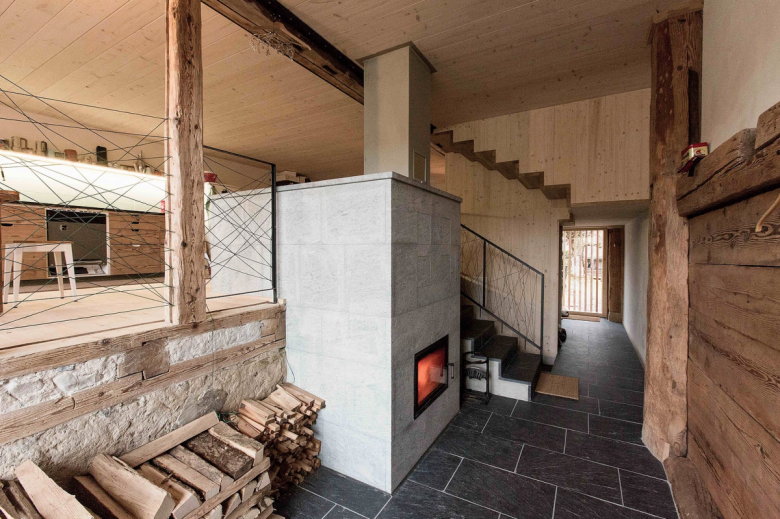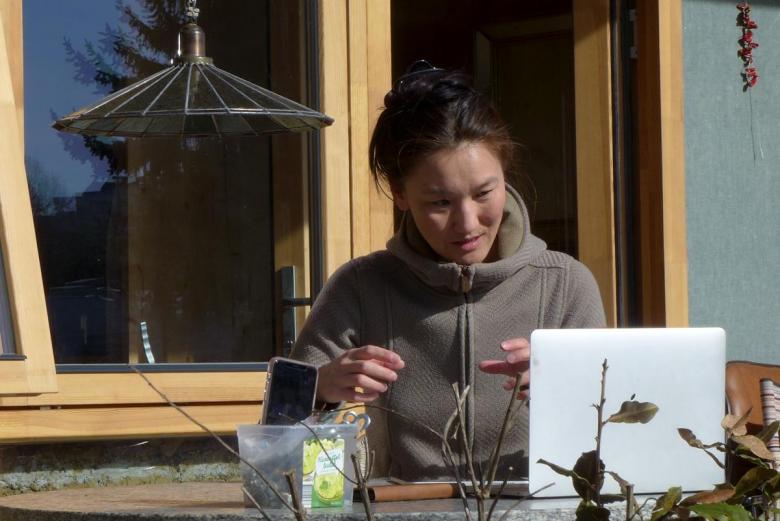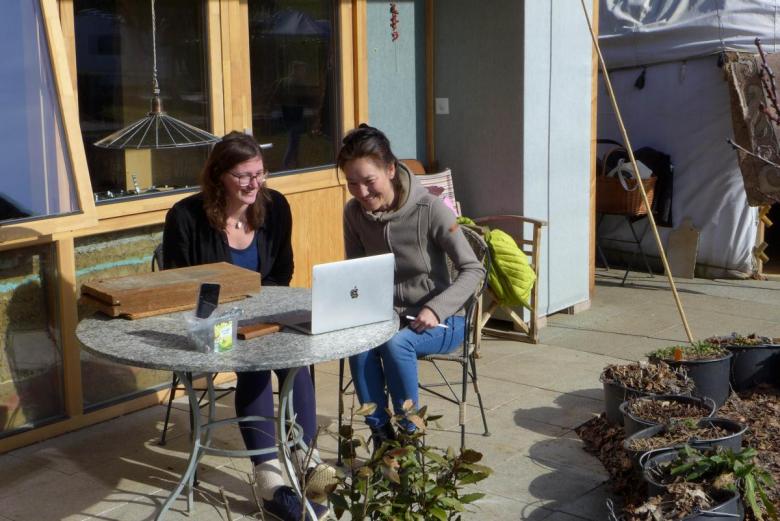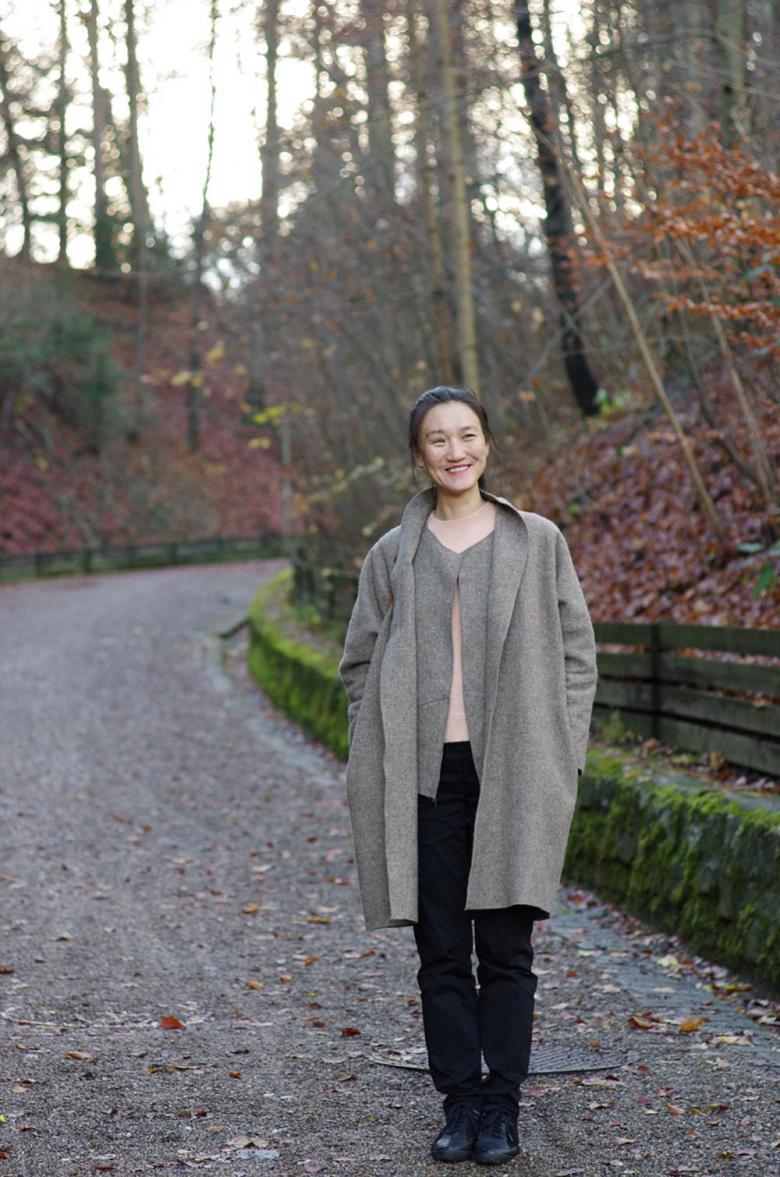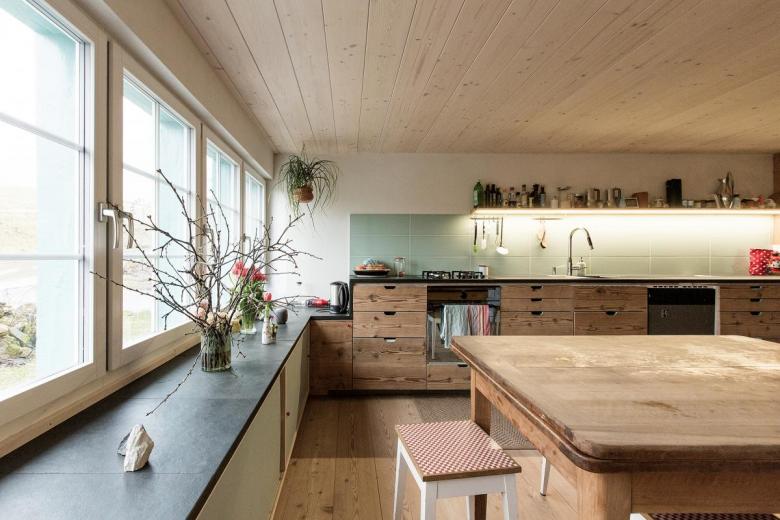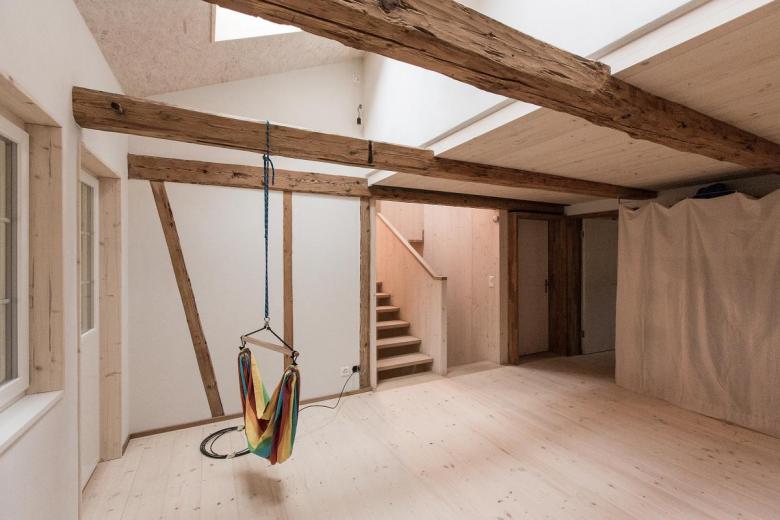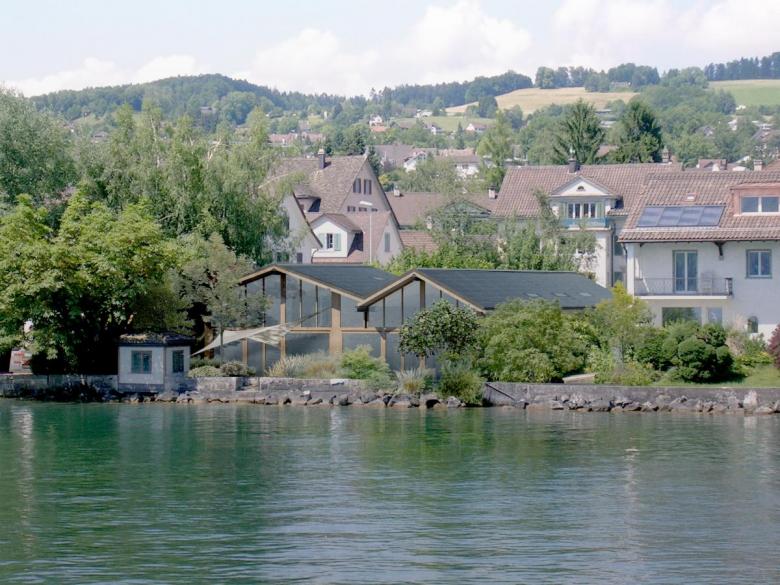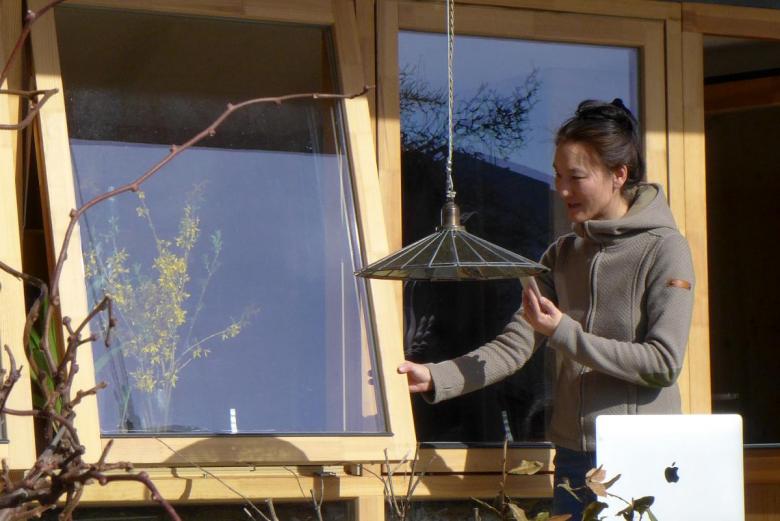Saikal Zhunushova, 'the Young Woman with the Low-Tech Approach'
Swiss-Architects Editor in Chief Elias Baumgarten recently interviewed architect Saikal Zhunushova, who placed third in the 2021 Foundation Award, which annually recognizes the innovate work of Swiss architecture offices less than five years old. Born in Kyrgyzstan and now based in Winterthur, Zhunushova is working on projects and sharing her knowledge in both countries.
Elias Baumgarten: Saikal, you decided very early on to become an architect …My father was an architect. He had a good job with the administration of a town in Kyrgyzstan; his tasks were comparable to those of a town architect in Switzerland. Then we had a fatal car accident. In memory of him, we kept his many books and journals on architecture in the Soviet Union. They meant a lot to me. I loved reading them — I was a teenager at the time. They were full of wonderful drawings of Constructivist projects — these pictures fascinated me. From that time on, I also wanted to become an architect!
My studies had no practical relevance whatsoever! I didn’t know much when I graduated, even the simplest tasks were too much for me. For example, my uncle wanted to know how to install a modern toilet in his house instead of having to use the outhouse in the garden any longer. I had no idea. In six years, we had never looked at a practical problem once. It was always only about conceptual work; building tasks and building sites were solely fictitious. We elaborated our projects to a scale of 1:50 at most. We never really learned how to construct and develop details.
This kind of education creates problems: many buildings in Kyrgyzstan are poorly constructed and designed. I already realized this when I was a teenager. After my father died, my mother — now on her own with three children — had to move into a smaller house. It was freezing cold there in winter, we had to heat a lot. The windows were not tight and in bad weather, rain leaked in. This experience shaped me as an architect.
My idea was to be educated in Switzerland and then return to Kyrgyzstan to share my knowledge.
It would have been wrong to leave Switzerland right after completing my studies. I would have remained a theorist. As a student, I was not allowed to work under the terms of my residence permit — not even for free. Yet I wanted to get to know Swiss office culture and construction practice. This is why I stayed to catch up on this experience. After I secured my first own commission in 2017 for the conversion of a Flarzhaus in Bauma, a kind of historical terraced house, I decided to start my own business and founded Oekofacta. Today I believe that I can make more of a difference by working in both countries at the same time.
People who go abroad don’t always have an easy time in our country. Some think of them as traitors and reject them. It is therefore important to strike the right tone: I make suggestions and don’t lecture people. This makes it easier for them to accept new things.
Specifically, I organize various workshops with a strong practical relevance. For example, I have made the residential house with a sewing studio that I am building for my family in Bishkek a subject of my courses. I offer theoretical classes and site visits. In my latest course, half of the participants are practicing architects and the other half are people interested in building. The participants have found each other, and three sustainable buildings are being built as part of the course. That makes me very proud!
Admittedly, my focus is on the know-how transfer from Switzerland to my first home country. But your question brings to mind a delightful story: I designed a coat — simply because I enjoyed it. My mother sewed it from felt in Kyrgyzstan. It’s crazy: wherever I go wearing it — whether it’s at the Fotomuseum in Winterthur or in some Zurich store — people always approach me. They say I absolutely have to have the model made in Switzerland according to the Kyrgyz model.
Seriously, I have noticed, for example, that Kyrgyz architects are more proficient in earthquake safety. They often have specialist knowledge in this field.
I have already told you about my mother’s house, which was always cold and needed extreme heating. My great interest in the use of solar energy stems from this experience. Kyrgyzstan has a continental climate — the air is dry, in summer temperatures can rise to over 45° Celsius, and in winter there is often severe frost. Ninety percent of the country is situated at altitudes higher than 1,500 meters above sea level, and we have over 300 days of sunshine. If these factors are taken into account in the planning phase — meaning that the houses are sensibly insulated, large window areas are provided on the south façades, and effective solar shading is installed for the summer months — there is little or no need for heating and cooling despite the harsh climate.
Laboratory sounds like experiments. We are, however, dealing with facts: The effect of solar radiation can be demonstrated well with simulations. It works! In Stäfa, for example, I am currently converting a historical warehouse into two apartments. The building is located in the core zone and directly on the lake. The building envelope and roof shape are not being changed, but I am increasing the insulation and extensively opening up the south façade to allow more daylight to enter, but above all to make optimal use of solar energy. The building mass of the house stores heat and releases it continuously at night. Energy demand calculations have shown that 40 percent of the energy demand can be covered in this way. At first, the municipality and the canton opposed the large glazing and demanded wooden cladding. I made it clear that I did not want to spend any additional energy on heating and refused to let the strong solar radiation on the building site go unused. These arguments were convincing, and I can now implement the project as requested.
I find that intriguing. Architects with whom I have talked about climate-friendly building in recent months have told of very different experiences with their clients and the authorities: While Hermann Kaufmann and Martin Haas, for example, said that sustainability has lately been increasingly demanded, Patrick Lüth from Snøhetta commented that most developers continue to rely on concrete buildings, which are not very sustainable, and that politicians are not doing enough. Overall, I get the impression that — probably also driven by the political discourse and initiatives such as Fridays for Future — a slow rethinking process is underway.
I had a very good experience with my conversion in Bauma. During the approval process, I had to convince the local heritage protection office, which originally insisted on a wooden screen instead of an open south-facing façade, that I did not want to forfeit free heating, so to speak. This was accepted, and I got permission to install a completely open glass façade on the ground floor and a half-open one on the upper floor.
When I got to know the new clients in Stäfa, I was the young woman with the low-tech approach who wasn’t thought of as being very capable. Yet my arguments were convincing: we visited the implemented project in Bauma together, and suddenly everyone was enthusiastic — at first the daughter, then the whole family. From that moment on, their awareness of sustainability was very strong throughout the entire process. For example, the clients immediately asked critical questions when construction companies from the area were not commissioned — they said it was unecological to travel such long distances.
Thank you, that is a very good question. We have a lot of catching up to do in Kyrgyzstan: conversions are not done there, everything is demolished and rebuilt. There is much less appreciation for existing buildings than here. When I tell my students that I have converted a house in Switzerland that was built in 1836, they are amazed. This is completely new for them and hard to imagine. In Bishkek, a large empty building from the Soviet era with imposing columns and beautiful vaults was just demolished. It was valuable in terms of architectural history and structurally sound — it could easily have been converted and put to new use. Too bad! And when several old barns were torn down on the property where the aforementioned house for my family is being built, I met with incomprehension because I asked that at least the boards be saved to be used a second time.
Things also need to change when it comes to natural building materials: I had to plan our house as a concrete structure — simply because there is insufficient expertise locally in timber construction, for example. That was very difficult for me; I don’t want to have to build that way ever again! At least we can install filigree coffered ceilings and thus reduce the amount of concrete used, because unlike here, labor is cheap in Kyrgyzstan, but the material is expensive.
I designed a Tiny House with a passive solar panel consisting of a rammed earth wall and a black granite window sill. Mara, a 22-year-old psychology student, built it last year. She did everything herself — from carpentry and joinery to laying electrical wiring and heavy granite slabs.
As a woman, I haven’t had any bad experiences in the Swiss construction industry. Basically, I perceive this country as demanding but fair. There are prejudices against women, yes, but you are respected for strong arguments and knowledge. This is not the case in my homeland, the situation is currently much worse. Traditionally, it was common for men and women to build together; the interior finishing of yurts was even done almost entirely by women. But with Islamization, this is now changing: women are being pushed back from public life and have to subordinate themselves more and more to men. I think this is a sad development!
That’s right.
I get great feedback from my course participants. They say that I should make the content accessible to even more Kyrgyz people in the field of architecture, for example through publications. We have recently started to produce instructional videos. When I see how the knowledge is accepted and applied, it really motivates me! Moreover, I not only enjoy teaching, I also benefit from it and learn a lot when preparing the lessons. And one more good news: I just received an inquiry from an investor who wants to build an eco resort with permaculture on 45 hectares of land in Kyrgyzstan. He is enthusiastic about my portfolio, and if everything works out well, I will soon be able to start planning.
Thank you for the exciting insights into your work and biography. I hope that your third place in the Foundation Award and our interest will motivate you and bear you out in being on the right track with your commitment and your architecture.
This interview originally appeared as Saikal Zhunushova: «Ich war die junge Frau mit dem Lowtech-Ansatz, der man wenig zutraute. Doch meine Argumente haben überzeugt» on Swiss-Architects. Translation by Bianca Murphy.
相关文章
-
-
Isabel Zumtobel: 'We Believe in the Power of Design to Change the Future for the Better'
World-Architects Editors | 18.11.2025 -
-
